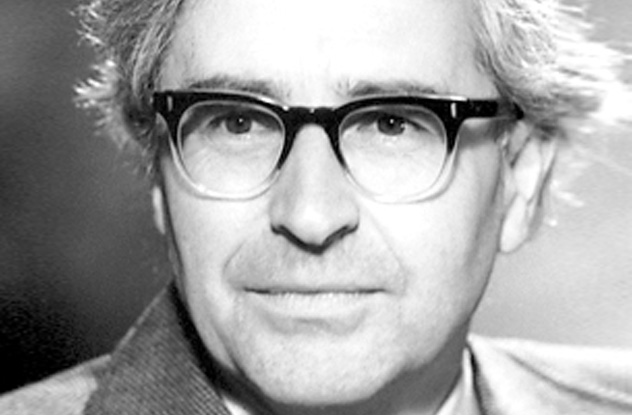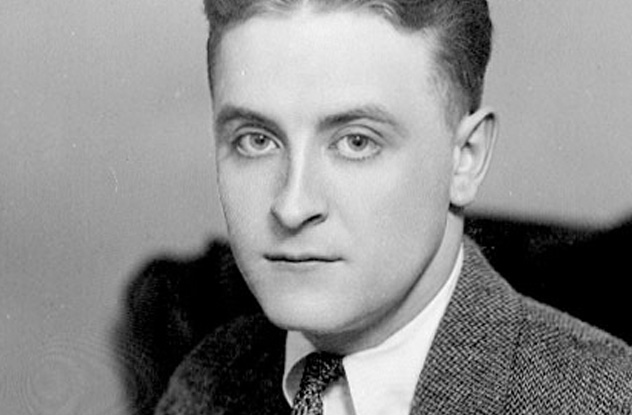 Music
Music  Music
Music  History
History 10 Less Than Jolly Events That Occurred on December 25
 Weird Stuff
Weird Stuff 10 Funny Ways That Researchers Overthink Christmas
 Politics
Politics 10 Political Scandals That Sent Crowds Into the Streets
 Weird Stuff
Weird Stuff Ten Bizarre Facts About The Doge Meme
 Our World
Our World 10 Ways Your Christmas Tree Is More Lit Than You Think
 Movies and TV
Movies and TV The 10 Coolest Stars to Set Sail on The Love Boat
 History
History 10 Things You Didn’t Know About the American National Anthem
 Technology
Technology Top 10 Everyday Tech Buzzwords That Hide a Darker Past
 Humans
Humans 10 Everyday Human Behaviors That Are Actually Survival Instincts
 Music
Music 10 Surprising Origin Stories of Your Favorite Holiday Songs
 History
History 10 Less Than Jolly Events That Occurred on December 25
 Weird Stuff
Weird Stuff 10 Funny Ways That Researchers Overthink Christmas
Who's Behind Listverse?

Jamie Frater
Head Editor
Jamie founded Listverse due to an insatiable desire to share fascinating, obscure, and bizarre facts. He has been a guest speaker on numerous national radio and television stations and is a five time published author.
More About Us Politics
Politics 10 Political Scandals That Sent Crowds Into the Streets
 Weird Stuff
Weird Stuff Ten Bizarre Facts About The Doge Meme
 Our World
Our World 10 Ways Your Christmas Tree Is More Lit Than You Think
 Movies and TV
Movies and TV The 10 Coolest Stars to Set Sail on The Love Boat
 History
History 10 Things You Didn’t Know About the American National Anthem
 Technology
Technology Top 10 Everyday Tech Buzzwords That Hide a Darker Past
 Humans
Humans 10 Everyday Human Behaviors That Are Actually Survival Instincts
10 Famous Hacks Who Passed Other People’s Work Off As Their Own
People want reward without effort. That’s why so many of us never fulfill our ambitions of becoming novelists or sports stars—the reality of sitting down to write or getting up to train every day is just too hard. But some people get rich, famous, and admired without lifting a finger just by taking someone else’s hard work and claiming all the credit.
10Walter Keane

The talent behind those big-eyed-kid paintings hanging up in your grandma’s home, Walter Keane lived a life of debauchery, alcoholism, and group sex. At least, the second half of that sentence is true. In reality, the person responsible for the paintings was Keane’s wife, Margaret.
In the early 1950s, Margaret was making ends meet selling her paintings outside one of San Francisco’s many beatnik clubs. At some point, she started up a relationship with Walter. They got married, and for two years, everything was fine. Then Margaret discovered her husband selling her paintings as his own. At this point, she probably should have left, but she instead stayed and became Walter’s artistic slave.
As the ’50s rolled into the ’60s, Walter made millions from his wife’s paintings. He bought a gigantic house, palled around with movie stars, and lived a life of luxury. By contrast, Margaret was kept imprisoned in a tiny room, forced to paint for 16 hours a day. Walter refused her contact with the outside world and routinely threatened her with murder. The few times she tried to leave, Walter claimed that he would ruin her and their children.
By 1970, Margaret had had enough. She left Walter and told a reporter everything.
In the acrimonious legal battle that followed, Walter nearly made good on his promise to ruin her. Then a judge had them both paint a picture in the courtroom, proving Margaret’s claim. Today, Margaret’s story is about to become of a biopic directed by Tim Burton, while her former husband is known across the world as an abusive jerk.
9Otto Hahn

As a Nobel Prize–winning chemist and the genius who discovered nuclear fission, Otto Hahn should probably be above reproach. Yet his greatest discovery came courtesy of exiled Jewish physicist Lise Meitner, whose contributions he publicly denied.
In 1938, Meitner and Hahn were working together at the Kaiser Wilhelm Institute for Chemistry in Austria (today often referred to as “The Otto Hahn Institute”). The Nazis invaded, and Meitner fled to Sweden, fearing for her life. There, she found herself ignored, cut off from the outside world, and lacking in research equipment. Desperate to continue her work, she started corresponding with Hahn, helping him interpret results and offering theories. It was the start of a collaboration that would make Hahn’s name.
By November that year, Hahn’s research had reached a dead end. He turned to Meitner, who suggested a series of further tests he could perform. It was fission’s “eureka” moment. Armed with Meitner’s suggestions and her previous research, Hahn went on to prove the possibility of fission. Yet when he published his paper, Meitner’s name was nowhere to be found. Her claim was rejected by the Nobel committee, and Hahn spent the rest of his career downplaying her achievements.
8Henry Gauthier-Villars

In 1900, a slim novel shook literary Paris to its core. Allegedly the work of a 16-year-old schoolgirl, it was profane to a stunning degree. The critic Henry Gauthier-Villars (aka “Willy”) claimed to be the true author.
The novel was Claudine at School, and the actual writer was Willy’s first wife, Sidonie-Gabrielle Colette. A wild child from Burgundy, she had lived the life portrayed in Claudine. Yet rather than bring her before the public, Willy decided to pass her work off as his own. Locking her in a room, he had her produce one Claudine novel after another, signing each one “Willy” and encouraging the world to think he was the genius behind them.
Although it was successful for a while, Willy’s deception didn’t last. Sixteen years after they got married, Colette divorced him. She went on to write dozens of celebrated novels. He went down in history as her dreadful first husband.
7Charles Ross

If you’d lived in Victorian Britain, the name of Ally Sloper would be permanently etched on your synapses. A bumbling, working-class drunk, Sloper was to 19th-century cartoons what Walter White is to prime time drama. The character and his accidental clowning was the perfect tonic for a troubled age and was created by the husband and wife team of Charles Ross and Marie Duval. At least, that’s the official story. The reality is that Ross almost certainly had nothing to do with the character.
Although he possibly came up with the concept, almost everything to do with Sloper was concocted by his wife. Duval drew nearly all the comics and turned the character into a Victorian icon. Ross, by contrast, got all the credit and was hailed as the true genius behind the work for nearly 150 years. Only in the last couple of years, mainly thanks to the work of comics historian David Kunzle, has Duval finally managed to get the credit she deserves.
6Zynga

As creators of FarmVille, ChefVille, and other time-wasting games ending in “ville,” Zynga was briefly one of the most popular games companies on Earth. Under CEO Mark Pincus, they pioneered a strategy of creating addictive, playable puzzles . . . or, rather, brazenly stealing the hard work of smaller developers and passing it off as their own.
FarmVille, for example, was a carbon copy of Farm Town, with so few differences that SF Weekly called them “indistinguishable.” Released six months before its more famous cousin, Farm Town attracted just a fraction of the audience (and revenue) of Zynga’s clone. An identical story happened with Cafe World. Although not as successful as FarmVille, it still made the company millions, despite literally everything about it being stolen from a game titled Restaurant City.
Those are just the two biggest examples, but there are plenty more. In 2012, Zynga took the NimbleBit game Tiny Tower and repackaged it as Dream Heights. Their copying was so absolute that they even duplicated minor game mechanics that in no way affected gameplay or usability. A side-by-side comparison of their many games against the originals reveals just how blatantly they stole from the creators.
5Bob Kane

We’ve told you before about how Batman creator Bob Kane was so useless that he nearly sank the character before the comic even started. It was only thanks to his chance hiring of creative genius Bill Finger as writer that Batman isn’t now known as “Birdman.” But Finger’s contributions went a lot further than that. Kane stole all the credit for Finger’s work and refused to give him so much as a penny.
Although he came up with Batman’s backstory, villains (including the Joker), design, and gadgets, Finger died unacknowledged and utterly broke. So dire were his finances that his family couldn’t even afford a proper funeral. By contrast, Bob Kane became a multimillionaire lauded around the world for giving us the first morally complex superhero.
Kane did eventually acknowledge Finger’s contribution—in 1989, when Finger was already 15 years dead, and Kane didn’t have to give him any money. Even then, Kane underplayed Finger’s role. To this day, all Batman films, comics, games, and merchandise go out with the words “created by Bob Kane.” Bill Finger’s name is conspicuously absent.
4Jimmy Page

Despite seemingly being one of the most creative rock bands in music history, Led Zeppelin were anything but original. The surviving members are currently embroiled in a court case to determine if they ripped off their greatest hit, “Stairway to Heaven,” and it’s looking like the verdict may well be “yes.” But music fans have noted plenty more instances of the band stealing from fellow artists.
The Music Times, for instance, ran an article highlighting at least seven songs that they may have ripped off from other singers. In 2010, American folk singer James Holmes sued Jimmy Page for stealing “Dazed and Confused” from him following a 1967 gig they did together. Websites have catalogued dozens of tracks that probably originated with someone else.
Page continues to dismiss such claims as “ridiculous,” describing himself as “pretty damn original.”
3Antony Hewish

Jocelyn Bell Burnell may be one of the most remarkable people to have ever existed. In 1967, at the age of 24, she helped build a radio telescope at Cambridge University in England. Almost immediately afterward, she used it to discover pulsars, completely upending everything we thought we knew about supernova explosions. The monumental observation netted a Nobel Prize in physics—for her supervisor, Antony Hewish.
While the find had absolutely nothing to do with him, Hewish still walked away with the prize in 1974. But he was kind enough to share it . . . with Martin Ryle, a man you may recognize as also not being Bell Burnell.
In those days, junior assistants simply didn’t make big discoveries. If they did, they weren’t women. The entire mindset of the scientific establishment was that if a lowly 24-year-old did something ground-breaking, it was her supervisor’s right to take the credit—something Hewish had no qualms about doing.
Although Bell Burnell was cheated out of her Nobel, she’s today credited as the sole discoverer of pulsars.
2F. Scott Fitzgerald

One of the titans of American literature, F. Scott Fitzgerald may be the greatest author who ever lived. Aside from writing The Great Gatsby, he produced dozens of short stories and was possibly even responsible for one of football’s greatest tactical innovations. Yet evidence suggests that a surprising chunk of his writings came from the mind of wife Zelda.
Fitzgerald based characters on Zelda, even incorporating bits of her private life into his novels. Things went further than mere inspiration. While writing his first novel, Fitzgerald lifted lines of Zelda’s love letters word-for-word and gave them as dialogue to his characters. By the time they were living together in Paris, he was actively raiding her diaries for ideas and phrases he could use.
When the New York Herald Tribune asked Zelda to review The Beautiful and the Damned, she discovered entire passages that had been written by her. According to biographer Kendall Taylor, Zelda’s influence was so great that she should even be credited as co-author.
Not everyone subscribes to this view. Many claim that even if Fitzgerald openly stole from Zelda, his genius wed those phrases to a plot and made you care about the character. Still, an acknowledgement would have been nice.
1Bertolt Brecht

The great-granddaddy of theatrical modernism, Brecht is lauded even today for his plays and poetry. Musicals like The Threepenny Opera continue to be performed worldwide and have even been used as the basis for works by writers like Alan Moore. But dig deeper, and it becomes apparent that Brecht was, at best, a hack. At worst, he was a serial abuser who forced others to write his greatest works for him.
In a 1994 biography, Brecht scholar John Fuegi stated that the playwright had a habit of courting literary women and then taking credit for their work. Most disturbing was the case of Margaret Steffin, who fell in love with Brecht at a very young age. According to Fuegi, she was single-handedly responsible for eight of Brecht’s plays, plus at least one novel and dozens of poems. At most, Fuegi estimated that Brecht wrote 10 percent of these works. Yet when the rise of Hitler caused Brecht to flee Europe, he left Steffin behind to die in a tuberculosis ward while fleecing her family out of any inheritance money.
This alone would be bad enough to damn him, but there’s plenty of evidence that Brecht forced at least three more women to fill Steffin’s shoes, treating them all with similar disdain. He also routinely swindled his songwriting partner on Threepenny Opera, staging the work as his alone and refusing to hand over earnings. Even the poet W.H. Auden was persuaded to work on Brecht’s screenplays for no money and no credit.
Perhaps more galling, the few unwilling ghostwriters who escaped Brecht’s grasp found it impossible to publish under their own names, since editors thought they were simply plagiarizing Brecht.








